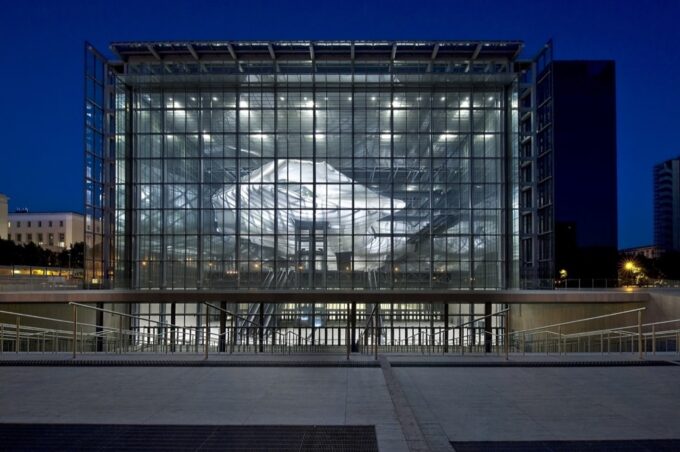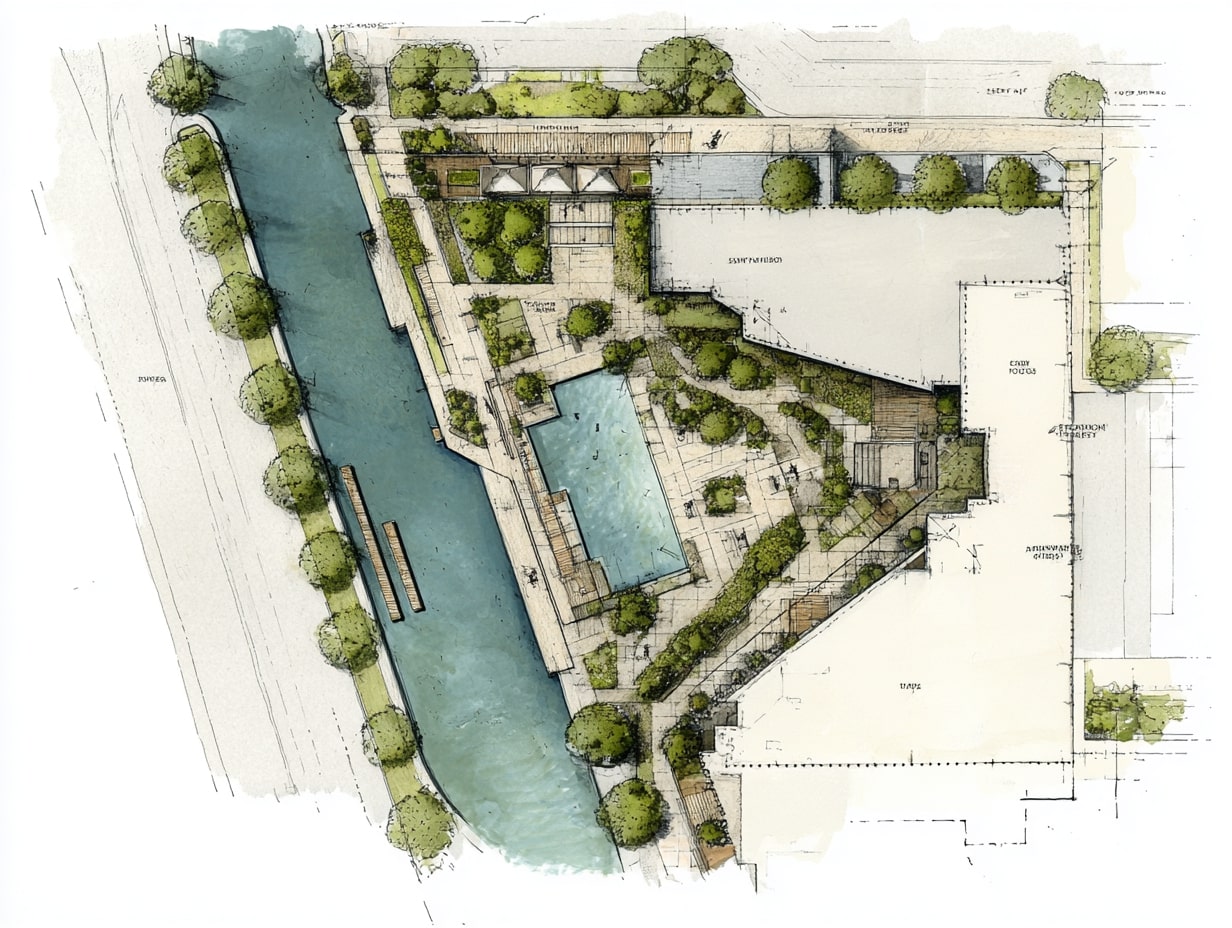- Home
- Articles
- Architectural Portfolio
- Architectral Presentation
- Inspirational Stories
- Architecture News
- Visualization
- BIM Industry
- Facade Design
- Parametric Design
- Career
- Landscape Architecture
- Construction
- Artificial Intelligence
- Sketching
- Design Softwares
- Diagrams
- Writing
- Architectural Tips
- Sustainability
- Courses
- Concept
- Technology
- History & Heritage
- Future of Architecture
- Guides & How-To
- Art & Culture
- Projects
- Interior Design
- Competitions
- Jobs
- Store
- Tools
- More
- Home
- Articles
- Architectural Portfolio
- Architectral Presentation
- Inspirational Stories
- Architecture News
- Visualization
- BIM Industry
- Facade Design
- Parametric Design
- Career
- Landscape Architecture
- Construction
- Artificial Intelligence
- Sketching
- Design Softwares
- Diagrams
- Writing
- Architectural Tips
- Sustainability
- Courses
- Concept
- Technology
- History & Heritage
- Future of Architecture
- Guides & How-To
- Art & Culture
- Projects
- Interior Design
- Competitions
- Jobs
- Store
- Tools
- More
Unleashing Facade Design Inspiration: Techniques for Creative Excellence
Unlock the secrets to stunning facade design, where creativity meets functionality in architectural exteriors. Dive into techniques that marry light, shadow, and innovative materials with cultural and environmental awareness.

When it comes to architecture, the facade is often the first impression a building makes. It’s an art form that blends creativity with functionality, capturing our attention and sparking curiosity. As designers, we know that mastering facade design requires more than just technical skills—it’s about drawing inspiration from diverse sources and translating those ideas into compelling structures.
In our journey to perfect facade design, we explore techniques that push boundaries and redefine aesthetics. Whether it’s the play of light and shadow or the use of innovative materials, these elements come together to create captivating exteriors that tell a story. By embracing new trends and timeless principles, we can craft facades that not only enhance a building’s appeal but also contribute to its environmental and cultural context.
Let’s delve into the world of facade design inspiration techniques and uncover how they can transform ordinary structures into architectural masterpieces.

Table of Contents
ToggleUnderstanding Facade Design
Facade design encapsulates the visual identity of a building. As an interface between exterior and interior, facades play a crucial role in architectural aesthetics and functionality. Integration of design elements such as forms, textures, and colors crafts unique building personas. By focusing on the harmony between these components, we can create engaging and purposeful facades.
Considerations in facade design include environmental responsiveness and energy efficiency. Incorporating passive design strategies enables buildings to adapt to local climates and reduce energy consumption. Techniques like using shading devices and thermal mass can significantly impact energy performance.
Cultural context is another essential factor in facade design. By reflecting local traditions and integrating vernacular motifs, we infuse modern structures with historical significance. This approach not only respects heritage but also enhances community identity.
Innovation in materials and technology allows us to push boundaries in facade design. New materials like photovoltaic glass and kinetic panels offer dynamic solutions, blending sustainability with contemporary aesthetics. These advancements present opportunities to redefine facade functionality while maintaining visual allure.
By understanding these facets, we gain the ability to transform facades into engaging stories that resonate with their environment and occupants.
The Importance of Inspiration in Facade Design
Inspiration in facade design acts as a crucial catalyst for blending creativity with functionality. It sets the stage for developing innovative solutions that reflect cultural and environmental contexts.
Sources of Inspiration
We find inspiration for facade design in numerous places. Nature offers endless patterns and textures; examples include the intricate geometry of leaves or the flowing forms of water. Historical architecture provides lessons in durability and aesthetics, with iconic structures like the Parthenon demonstrating timeless appeal. Cultural motifs, such as tribal patterns or regional architecture styles, embed stories into modern designs. Art and fashion contribute color palettes and styles, inspiring bold and innovative facades.
Analyzing Trends in Architecture
Staying attuned to architectural trends shapes facade design innovation. The rise of sustainable materials like bamboo or reclaimed wood reflects an industry-wide shift towards eco-friendly practices. Minimalist designs with clean lines and neutral colors align with modern aesthetics yet maintain functionality. Technological advancements, such as 3D printing and smart glass, redefine possibilities in facade construction. By studying these trends, we merge current practices with visionary concepts.

Techniques for Mastering Facade Design
Mastering facade design involves integrating both artistry and functionality. Let’s explore how certain methods can inspire creative and culturally resonant facades.
Creative Visualization Methods
Creative visualization is key to conceptualizing facade designs that captivate. We engage in brainstorming sessions, sketching ideas that align with the building’s purpose. Using tools like 3D modeling software, we simulate the play of light and shadow on proposed designs. This lets us experiment with different textures, patterns, and materials, gaining insights before implementation. Inspiration can also stem from nature—observing organic forms and natural processes helps us understand how these elements can inform facade aesthetics and functional performance.
Incorporating Cultural Elements
Incorporating cultural elements strengthens a building’s connection to its location. We draw on local traditions and historical references to infuse designs with regional character. By integrating motifs and architectural styles native to the area, we create facades that resonate with the community and enhance cultural identity. We also consider colors, materials, and symbols that hold cultural significance, ensuring designs respect and reflect the heritage they celebrate. This approach not only fosters a sense of belonging but also enriches the narrative that the facade tells.
Case Studies of Iconic Facade Designs
Understanding iconic facade designs helps us appreciate the creativity and functionality that drive architectural innovation. Let’s explore the factors contributing to such masterpieces.

Modern Architectural Marvels
In our modern era, architects use advanced technology to craft remarkable facades. The Louvre Abu Dhabi showcases a dazzling dome with a complex geometric pattern generating an enchanting ‘rain of light’ effect. This design blends cultural inspiration with innovative engineering, using over 7,800 unique metal stars to filter sunlight delicately.
Another modern marvel, the Elbphilharmonie in Hamburg, transforms an old warehouse with a glass structure mimicking ocean waves. The facade’s curved glazing plays with reflections, creating dynamic visual interactions with the city and river. This project highlights the fusion of historical context with cutting-edge design, providing both aesthetic allure and functional performance.
Historical Influences and Innovations
Historically, facade designs have drawn inspiration from varied sources, integrating traditional motifs with new techniques. The Alhambra in Spain exemplifies this blend, featuring intricate Islamic artistry and innovative spatial layouts. Its facade includes exquisite tilework and geometric patterns that harmonize with its natural surroundings, showing a deep cultural connection.
Similarly, the Sagrada Familia in Barcelona stands as a fusion of Gothic and Art Nouveau styles. Antoni Gaudí’s visionary work transforms stone into organic forms, using the facade as a canvas for religious symbolism and structural innovation. This ambitious design uses advanced construction techniques while honoring historical influences, demonstrating a timeless approach to facade design.

Tools and Resources for Designers
Leveraging the right tools and resources elevates facade design by enhancing creativity and efficiency. Design software offers robust platforms for conceptualization, detail work, and visualization. Rhinoceros 3D and SketchUp enable designers to craft intricate facade elements, allowing precise manipulation of forms and textures. These tools support integration with other software for comprehensive project development, bridging the initial concept with final implementation.
Resource libraries enrich design inspiration by providing access to a vast collection of materials and precedents. Online databases like ArchDaily and Dezeen showcase global architectural innovations, offering insights into diverse styles, materials, and technologies. Additionally, books such as “The Art of Facade Engineering” and “Facades: Principles of Construction” provide theoretical foundations and practical examples.
Professional networks and forums facilitate knowledge exchange and collaboration. Platforms like LinkedIn and AIA Architect provide spaces for sharing experiences, discussing challenges, and gaining insights from industry leaders. These connections foster a supportive community where ideas and innovations in facade design can thrive.
Workshops and webinars offer opportunities for continuous learning and skill enhancement. Events hosted by architectural institutions and design firms provide firsthand access to cutting-edge techniques, trends, and tools. Attendees can engage with experts, participate in interactive sessions, and receive practical tips applicable to real-world projects.
Use of tools and resources empowers designers to transform their facade projects into compelling architectural narratives, enabling them to combine creativity with functionality and drive innovation in modern architecture.
Conclusion
Mastering the art of facade design involves a blend of creativity, functionality, and cultural awareness. By drawing inspiration from diverse sources and integrating artistry with innovative techniques, we elevate architectural exteriors into captivating narratives. Embracing advances like smart glass and 3D printing while respecting historical and cultural contexts ensures our designs remain relevant and impactful. As we explore these techniques and tools, from brainstorming ideas to utilizing design software, we create facades that not only captivate but also resonate with their environment and users.
- advanced facade systems
- Architectural Facade Design
- artistic facade inspiration
- building facade inspiration
- commercial facade ideas
- contemporary facade techniques
- creative facade techniques
- exterior design excellence
- facade aesthetics
- facade design consultation
- Facade Design Ideas
- facade design trends
- facade renovation ideas
- innovative facade solutions
- minimalist facade designs
- modern facade designs
- residential facade inspiration
- sustainable facade designs
- unique facade concepts
Submit your architectural projects
Follow these steps for submission your project. Submission FormLatest Posts
General Arrangement Drawings in Architecture: The Backbone of Clear Design Communication
General Arrangement Drawings explained: what they are, when to use them, how...
The Ultimate Guide to Fencing in North Dakota: Choosing the Best Fence for Your Property
Watching a chain link fence twist in 70 mph winds near Minot...
Gaudí: Where Architecture Meets Science
Gaudí: Where Architecture Meets Science shows catenary arches, ruled surfaces, and biomimicry...
How Housing Market Forces Shape Architectural Design Today
Architecture never exists in isolation. Buildings rise from a mix of ambition,...












Leave a comment